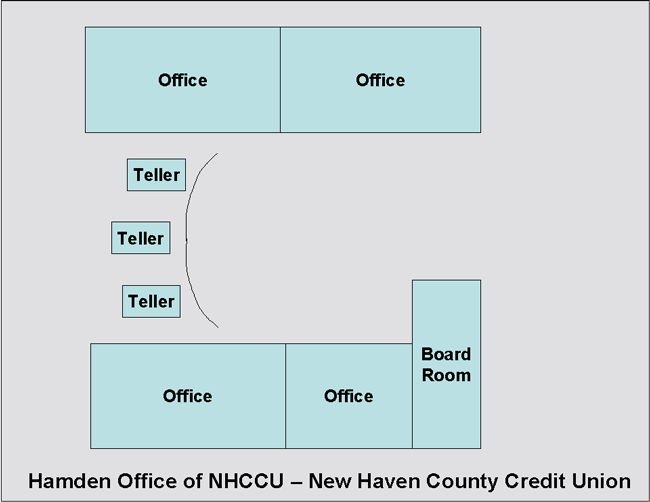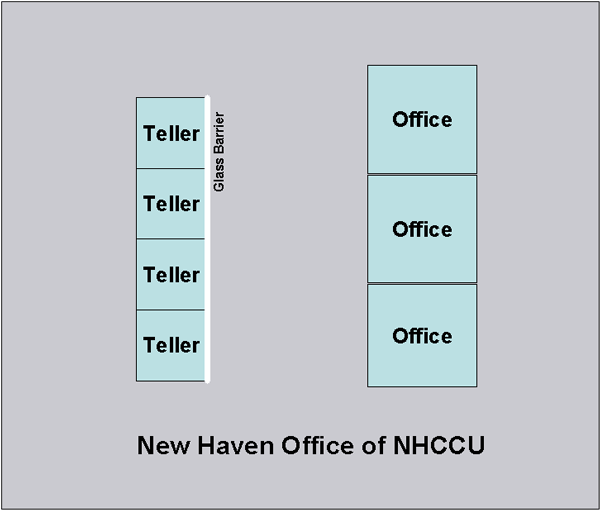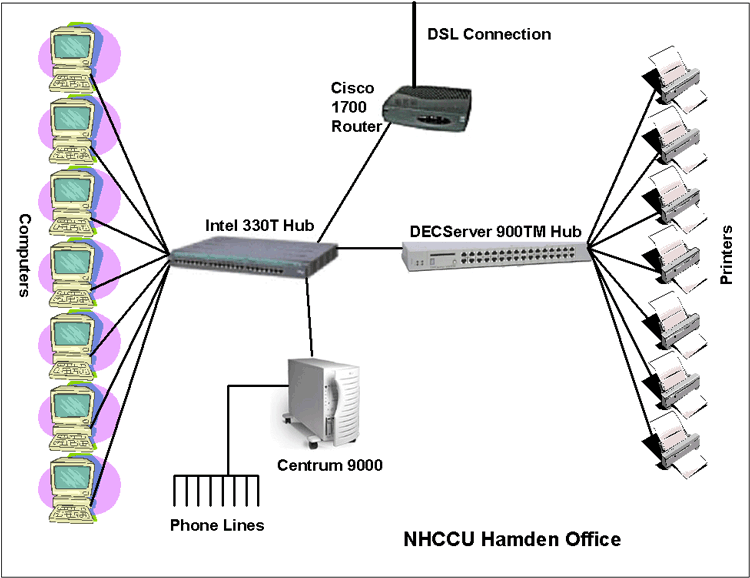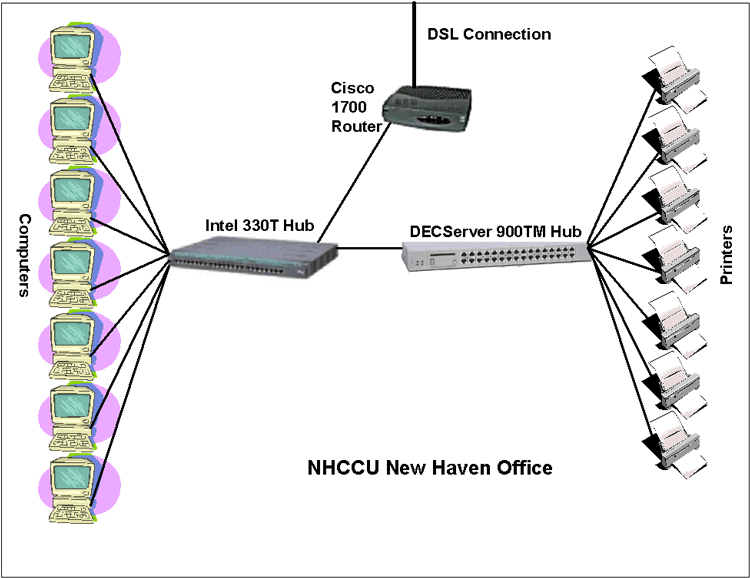
New Haven County Credit Union
James Farrell and Dale R. "Zy" Fox
| Some Background.
New Haven County Credit Union started out as a credit union for the
employees of St. Raphael's Hospital. Its mission expanded to
cover local healthcare workers. But in order to have enough
membership to really make things steady they've expanded their base
to all residents and people that work in New Haven County in Connecticut. They have
two branches, one in New Haven and their main office/branch in
Hamden. This case has put together by me, Dale R. "Zy" Fox, but it 's source is the CEO of NHCCU, Jim Farrell. This case is still in its beginnings and quite a few details may need to be altered for a few more iterations. For most of their computer related services they contract with outside vendors. They provide four major computer based services.
Their core banking capabilities have been handled by
But Remember Data was recently bought by Open Solutions/RDS Technologies of Glastonbury, Connecticut. Both of NHCCU's branches are connected to Remember Data in Indianapolis using VPN over leased small business DSL connections. The NHCCU ATM capabilities are done through a company called
The connection for the ATM in New Haven is based on a dial up telephone line. The connection to the ATM in Hamden is done through a dedicated phone line requiring no dial up. FISERV refers back to the Remember Data sources in Indianapolis to make sure all transactions and balances are current. The NHCCU Internet Banking capabilities are handled by
But Digital Insight connects back to Remember Data sources in Indianapolis to make sure online information is current. The NHCCU Audio/Phone Banking System is based in the NHCCU Hamden office. They have their own access server with eight incoming phone lines for customers. This computer is hooked up to Remember Data in Indianapolis via the VPN connection over the business DSL used for other banking operations at the Hamden office. The following diagram represents the important places for computer and printer connections in the Hamden office. |

| While there are other spaces/rooms, each office
and teller have their own computer and printer each connected to the
windows based LAN. A diagram of the major computer related features of the New Haven office are shown in the following diagram. |

| This office has a much smaller footprint, though
it has a lot of similarities in overall design. These can be abstracted somewhat to come up with the two following logical network diagrams after we give a little more discussion. In general, at least at the Hamden office, everything is 100Mbps "Fast" Ethernet. While it seems they have an unusual number of hubs coordinating the overall design and they enlarge the collision domain, they provide network links to everyone. |

The Centrum server handles the Audio/Phone
requests. They have configured all of the printers to be
network printers and accessible for anyone that knows their "name".
This helps overall system reliability.
The New Haven network is somewhat similar, though a bit simpler without the phone audio capabilities. The devices and topology are essentially the same |

| It seems clear that they need a
firewall/router with VPN and DHCP capabilities to coordinate protect
their networks at each location. Obviously, overall, things are working. Though, they some reasonably straight forward ways they can improve the network. |